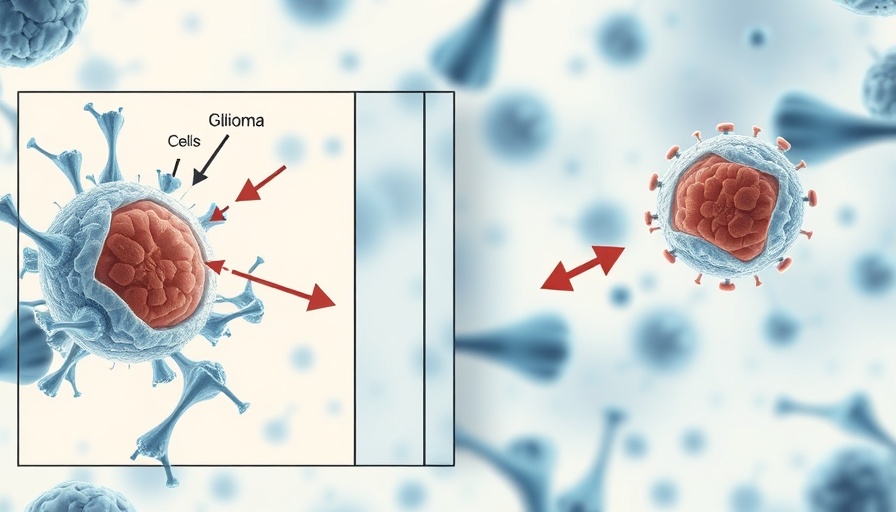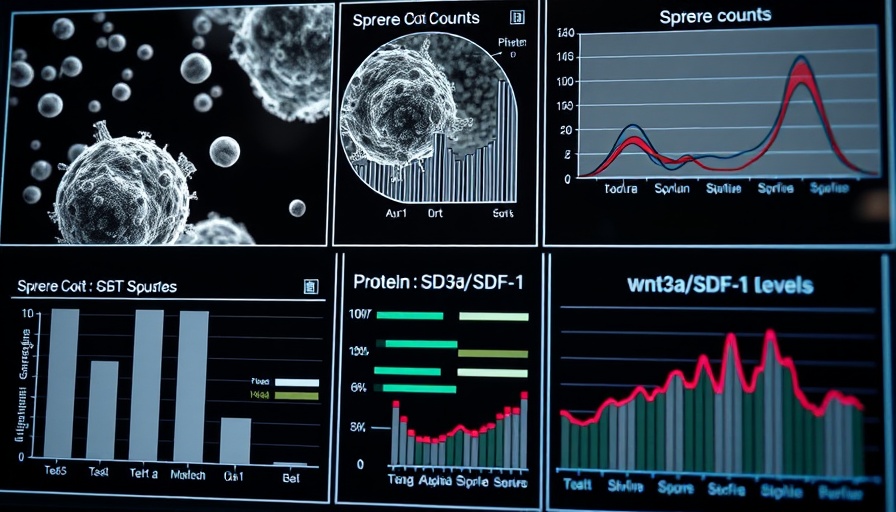
Understanding the Invasive Nature of Glioblastoma
Glioblastoma (GBM) is famously known for its aggressiveness, often eluding surgical and therapeutic interventions due to its highly infiltrative growth patterns. But what exactly fuels this invasion? Recent research sheds light on the role of oncostreams—pathways that facilitate communication between glioma cells and the surrounding supportive cells like microglia and macrophages. When GBM cells invade, they manipulate their surroundings by inducing specific receptors, like plexin-B2, enhancing their interaction and remodeling of the extracellular matrix. This organized structure allows the tumor cells to transition from bulk growth to more aggressive infiltrative behaviors.
The Crucial Role of Extracellular Matrix in Tumor Growth
The extracellular matrix (ECM) is not just a passive backdrop for tumors; it actively influences cancer progression. In the case of GBM, the careful structuring imposed by oncostreams enables glioma cells to thrive even as they encroach into neighboring tissues. This adaptability is critical for disease progression and highlights why understanding these interactions is vital for developing targeted therapies. Moreover, by unraveling these communication pathways, researchers hope to unveil new strategies to halt the invasion, potentially impacting patient outcomes significantly.
Moving Forward: Therapeutic Opportunities
The insights gained from studying the peritumoral infiltration patterns pose exciting opportunities for therapeutic innovations. If we can block the signals that facilitate this invasive behavior, it may be possible to curb the spread of GBM. Currently, researchers are delving into treatments that could inhibit the action of plexin-B2 or disrupt the oncostreams entirely, thus stifling the tumor’s invasive capabilities. This shift from treating the tumor bulk to addressing its infiltration might be the key to flipping the script on GBM, marking a pivotal move in clinical oncology.
Linking Research to Real-World Implications
As health-conscious individuals, it’s imperative to understand not just the science behind disease, but also how this research affects our approach to wellness and longevity. Knowledge of how GBM cells infiltrate can provide insight into broader themes of cellular health, highlighting the importance of maintaining a strong immune response and a supportive microenvironment for our cells. This holistic view can influence not only how we perceive cancer research but also how we strategize health optimization across the board.
Expert Health Insights: What Can We Do?
While research continues to unfold, there are actionable health strategies you can incorporate today. Adopting a balanced diet, rich in antioxidants and anti-inflammatory compounds, is shown to bolster cellular health. Supplements that target longevity markers, such as telomere length and cellular repair mechanisms, also play a crucial role. Keeping abreast of cutting-edge health research allows us to tailor our wellness strategies effectively, emphasizing the preventative aspect of health and longevity.
The Future of Longevity: A Collective Journey
As advancements in aging research propel our understanding of cellular health, we must embrace strategies that cater to our long-term well-being. The studies surrounding oncostreams and glioblastoma provide more than just insights into a severe condition—they present us with a roadmap towards optimizing our health. By cultivating the knowledge of these dynamic cellular interactions, we can encourage a shift from passive health management to proactive health optimization. So, let's embark on this journey together, leveraging science-backed health tips and biohacking techniques to extend our healthspan and enrich our lives.
 Add Row
Add Row  Add
Add 




 Add Row
Add Row  Add
Add 


Write A Comment